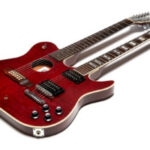Ensuring your ukulele is perfectly in tune is the cornerstone of enjoyable and harmonious playing. Just like guitars and other stringed instruments, ukuleles rely on precise pitches for each string to create music within standard scales. This crucial process, known as tuning, involves carefully adjusting each string to its designated note using tuning pegs located on the headstock. Whether you’re strumming chords solo or jamming with fellow musicians, accurate tuning is paramount for producing pleasing sounds and avoiding jarring dissonance. Let’s dive into the world of ukulele tunings, exploring the most common types and how to achieve them.
Using a Microphone Tuner for Your Ukulele
One of the most accessible and user-friendly methods for tuning your ukulele involves utilizing a microphone-based tuner. This convenient approach allows you to tune your instrument in real-time using just your device’s microphone. Simply play each ukulele string individually, and the tuner will provide immediate visual feedback, indicating whether the note is too flat (lower than the correct pitch) or too sharp (higher than the correct pitch). By observing this feedback, you can easily adjust the tuning pegs to increase or decrease string tension until the tuner indicates you’ve reached the correct pitch. If you have a smartphone, tablet, or laptop equipped with a microphone, you can readily access and use a microphone-based tuner, making it a fantastic option for quick and accurate ukulele tuning.
Exploring Different Ukulele Tunings
While the ukulele’s versatility allows for tuning to a wide spectrum of notes, certain tunings have emerged as standards, particularly favored for playing popular music across various genres. Sticking to these common tunings is generally recommended, especially for beginners, as the vast majority of ukulele resources are based on them. However, venturing into alternative tunings can open up exciting avenues for more experimental and unique musical explorations.
It’s worth noting a distinctive characteristic of ukulele tunings: the bottom-most string (closest to your chest when holding the ukulele) is often tuned to a higher note than the string immediately above it. This “re-entrant” tuning is a defining feature in many standard ukulele setups. Tuning notations are represented by a sequence of letters, each corresponding to a string, starting from the bottom-most string upwards. Lowercase letters, like the ‘g’ in the standard gCEA tuning, indicate that the string is tuned an octave higher than expected in a linear, lower-to-higher pitch sequence.
gCEA Tuning: The Standard Ukulele Tuning
The most ubiquitous and widely recognized ukulele tuning is gCEA. This standard tuning is the bedrock of the vast majority of ukulele learning materials, including songbooks, chord charts, and online tutorials. Consequently, gCEA tuning is the most practical choice for playing along with songs, collaborating with other ukulele players, and accessing the wealth of available ukulele resources. Furthermore, gCEA tuning naturally lends itself to playing in the key of C major, a popular and fundamental key in countless musical compositions.
aDF#B Tuning: D Tuning for Ukulele
D Tuning, represented by the notes aDF#B, is essentially a variation of the standard gCEA tuning, but with each string’s pitch raised by a whole tone (equivalent to two frets higher). Just as standard tuning simplifies playing in C major, D tuning streamlines playing in the key of D major. Historically, D tuning enjoyed greater popularity in the 1920s and 1930s, making it particularly well-suited for authentically recreating music from that era. Additionally, D tuning often proves to be a more comfortable fit for smaller ukuleles like sopranino and sopranissimo models, given their shorter scale lengths which can sometimes feel tighter with standard tuning.
DGBE Tuning: Chicago Tuning for Ukulele Versatility
The DGBE tuning, sometimes referred to as “Chicago tuning,” finds greater favor among players of larger ukuleles, and is the definitive standard tuning for the baritone ukulele. A key feature of DGBE tuning is its direct correspondence to the top four strings of a standardly tuned guitar. This remarkable similarity makes DGBE tuning an invaluable tool for seamlessly translating songs, chord shapes, and musical ideas between the guitar and ukulele. If you’re interested in adapting guitar-based songs for the ukulele or playing alongside guitarists, DGBE tuning presents an excellent and intuitive option.
fA#DG Tuning: A#/Bb Tuning for Lower Registers
The fA#DG tuning is a less frequently encountered ukulele tuning compared to gCEA, D, or DGBE. Nevertheless, it offers unique advantages in specific musical contexts. This tuning effectively lowers the overall pitch of the ukulele by a whole tone (two frets), making it conducive to playing music in the key of A#/Bb. Furthermore, fA#DG tuning can be advantageous when you desire a slightly lower tonal register for your ukulele, either to better complement certain song keys that benefit from lower notes or to facilitate singing along in musical keys that are more comfortable in a lower vocal range.

